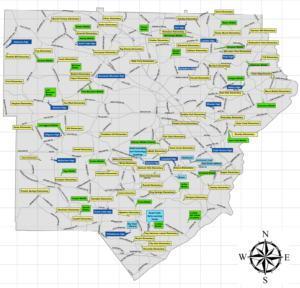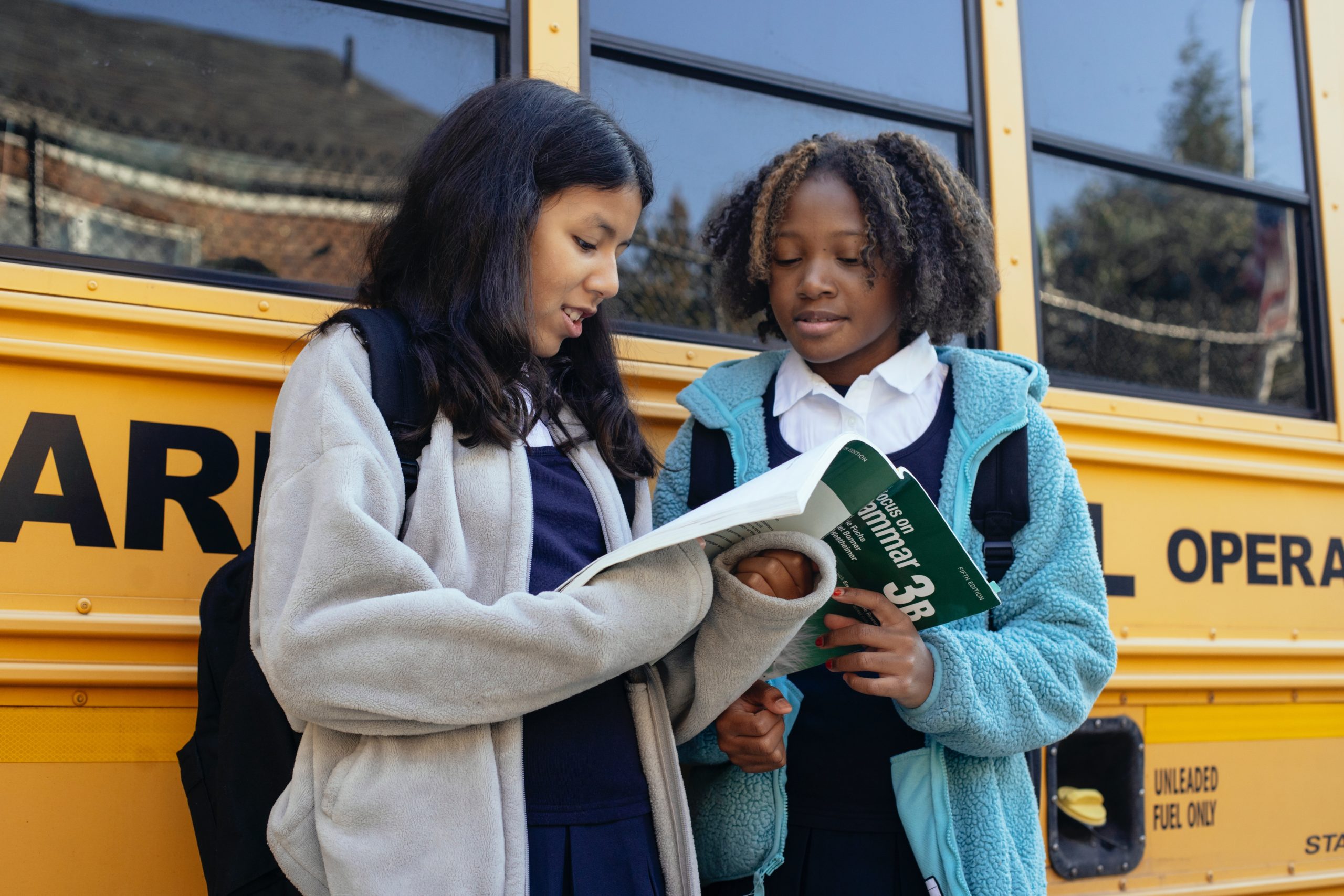College and university educators wishing to understand how students bring the effects of systemic inequities of high school education into higher education would do well to look at my home of Cobb County, Georgia. This metro Atlanta school district has 16 traditional public high schools according to the U.S. News & World Report directory and ranking of K-12 schools, and the ranking of these high schools highlights gross inequities, predicated on racial barriers, that go on to create unequal higher education experiences.

Image: Cobb County K-12 schools, via Cobbk12.org.
Some, like Kennesaw Mountain High School, where I attended, are diverse schools with sizable populations of Black and Latino students and other ethnic and racial groups alongside white students. Other schools are over 75 percent white. These 16 schools send many students on to the state’s numerous two-year and four-year public institutions like Georgia State University and the Georgia Institute of Technology, where I attend.
While Cobb County and its 16 high schools are just one example, it is a prime representation of how crucial it is for higher education to understand inequities in educational backgrounds. Looking at this school district and its students will help faculty and administrators better provide resources for student success, and understand current and potential students more holistically.
The context
I recognize that the purpose and methodology of rankings like those produced by U.S. News & World Report are contentious, but they provide a starting point for a discussion of equity gaps. The formula that U.S. News & World Report uses combines math and reading test scores, graduation rates, and a college readiness index, which is based on Advanced Placement (AP) or International Baccalaureate (IB) tests.
The resulting ranking shows that the top traditional high schools in the Cobb County School District are Walton, Lassiter, and Pope, which have 97 percent, 97 percent, and 96 percent graduation rates, respectively. The bottom three are Osborne, South Cobb, and Pebblebrook, with 71 percent, 71 percent, and 76 percent.
The socioeconomic factors of each school highlight the educational systemic inequities. In the U.S. News & World Report data, Walton High School has a 65 percent white population, with only a 6 percent Black and Hispanic population. Lassiter High School has a 73 percent white demographic, with Hispanic at 9 percent and Black at 7 percent, and Pope High School similarly has a 78 percent white student population, with Hispanic at 6 percent and Black at 5 percent.
The three bottom-ranked schools tell a different story; according to U.S. News & World Report, Osborne High School — the lowest ranked school — has a 64 percent Hispanic population and a 29 percent Black population. Pebblebrook High School is 58 percent Black and 33 percent Hispanic, and South Cobb High School is 61 percent Black and 21 percent Hispanic.
When factored with categories like reading proficiency, math proficiency and AP exams taken and passed, all which parallel the graduation rates, there is a consistent pattern throughout Cobb County: Schools that are majority Black and/or Hispanic rank lower than schools that are majority white.
It’s not that majority white schools don’t perform poorly; Kell High School has a 54 percent white population and ranks 10th out of the 16 traditional high schools. Sprayberry High school is ranked 11th, with its largest racial group being 37 percent white.
However, it cannot be overlooked that aside from Wheeler High School, ranked seventh with a 43 percent Black population (and with a renowned magnet program), no other schools with the largest population being Black or Hispanic rank above ninth. The top eight ranked high schools in Cobb all have white as the largest racial demographic.
There are two possible explanations. Either Black/Hispanic majority schools perform worse in comparison to white majority schools (i.e., students are not as capable) or Black and Hispanic high schools in Cobb County face severe systemic inequities in accessing the same education as other schools in their county.
Racialized opportunity
While many things can be understood from this information, perhaps the most important is that students at a university level are coming from varying resources. Therefore, colleges have to recognize this and provide new ways of helping students succeed.
In some areas of Cobb County, residents are a 30-minute drive from the house Dr. Martin Luther King Jr. was born in. Yet systemic inequities in education are glaring in Cobb County. The highest and lowest ranked schools (Walton and Osborne) are a 25-minute drive away, yet perform with vast differences.
Parth Patel, a former classmate of mine who attended a few Cobb County high schools and is now a Georgia State University student, told me he has observed how resources can be an aid to education.
“I felt like resources at Campbell were old,” he says. “In the sense of technology, etc. At Campbell I think IB kids were given more attention than non-IB students.”
On any given ranked list, there will be first place and last place. But the economic and racial demographics of a public high school shouldn’t be an indicator of how well a school performs.
The solution? Equal access to opportunity and resources, according to Patel. At Kennesaw Mountain High School, “Yes, there was a magnet program,” he says. “But everyone got the same opportunities. At Campbell it was different.”
How colleges can level the playing field
It’s inevitable that different students will come to colleges and universities from different backgrounds and access to resources, which is why it’s crucial for those institutions to level the playing field and offer resources.
One way is to use non-typical learning paths. Many students enter college with the idea of four years, two semesters per year, similar to high school. Colleges and educators need to offer non-traditional routes that include obtaining an associate’s degree, and summer classes to help spread out coursework.
Normalizing the option of spreading a degree out over five years, or however long it takes to truly succeed and learn material, is more advantageous than blowing through a class simply for a grade and credits toward a degree. Every student’s path should offer the flexibility of online study, especially asynchronous study, to cater to various schedules.
Studying abroad is another solution. Students affected by poverty often don’t get opportunities to travel as easily as their wealthier peers. Scholarships for studying abroad can create opportunities to travel and gain cultural and professional perspectives abroad.
Another way to level the playing field is providing campus resources for students. Georgia State University has a writing center, which allows students to bring rough drafts of their work to professionals at the school to make revisions, free of charge. Additionally, Georgia State University has the CIRCLE. The CIRCLE is the Center for International Resources and Collaborative Languages, and allows students studying language to connect with native speakers and practice or get help with their work.
Using technology to help students earn certifications allows them to be more lucrative in a job market, too. GoogleGrow is an initiative for professionals to earn a certification in various fields. Certifications in the myriad Microsoft software and Adobe programs like Premiere Pro and After Effects certify student abilities as well.
The takeaway
In order to prepare students for life after college, educators must understand that not every student shows up with the same foundation. This isn’t to be confused with some students not being capable; they wouldn’t be there if they weren’t capable.
Different approaches and resources must be used to help students craft the learning curve that best suits them. Education isn’t a straight, narrow path but the culmination of successes, failures, risks, and opportunities to help achieve the ultimate goal, which is helping students succeed.
Mark Lannaman is a student at the Georgia Institute of Technology, multimedia journalist, writer, and producer. He is a member of the Every Learner Student Fellowship cohort. You can connect with him on LinkedIn.


